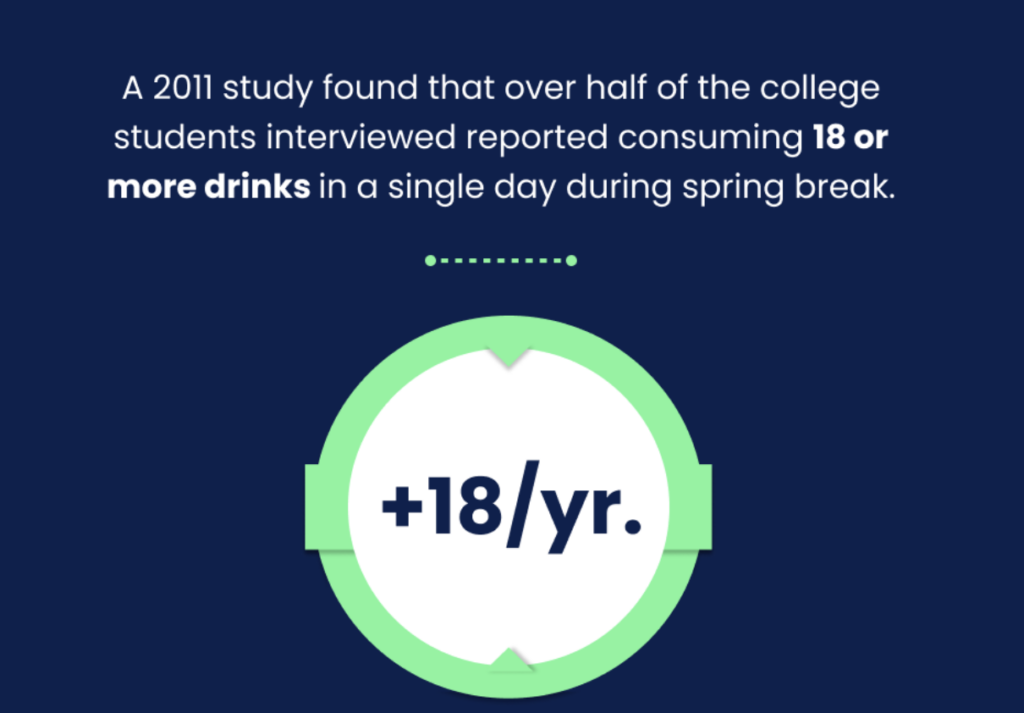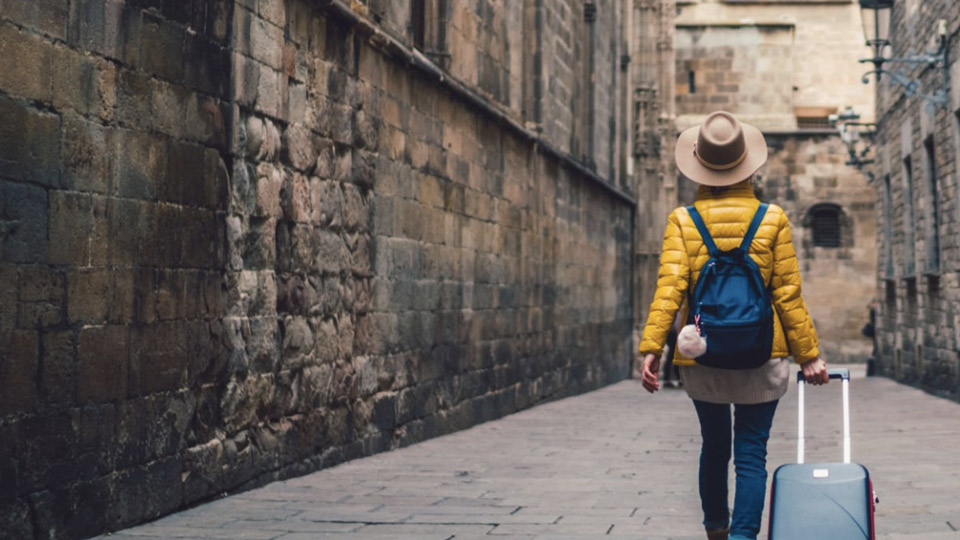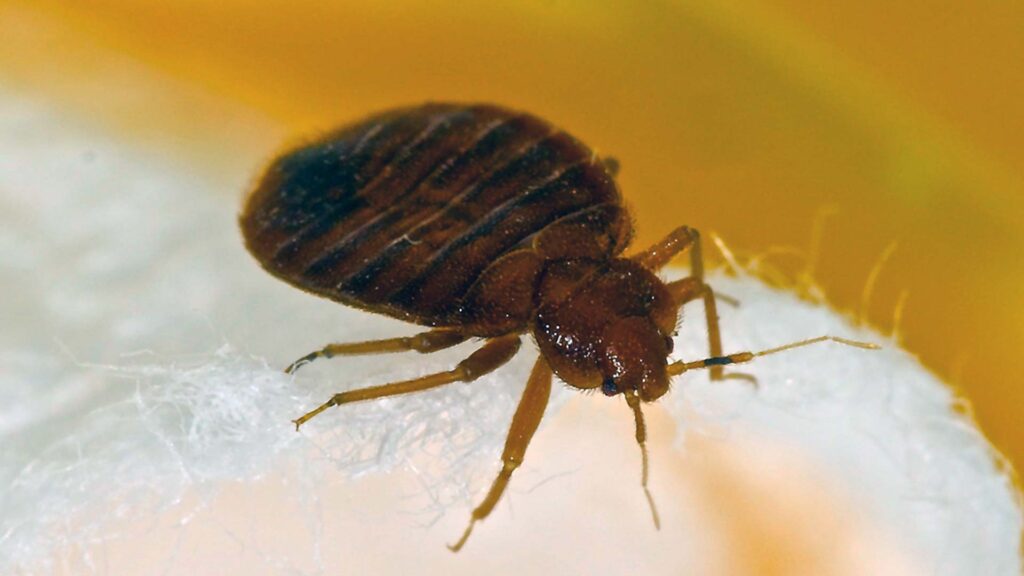Every year, 1.5 million U.S. college students will travel for their spring break, most likely your child included. Spring break is renowned for heavy partying, staying out all night, and trying new things. While expanding your horizons is never a bad thing, it can be a dangerous thing if not done properly. Before your college student heads out on spring break this year, we have researched and addressed the main issues you need to be concerned about as parents. The best thing you can do is send them prepared and aware while making sure they make memories to last.

Helpful Travel Apps
Before we get into our tips, we want to make you aware of apps and online resources that could be extremely helpful for you and your child during their spring break trip. Looking into these resources can help you and your student feel safer and more confident going into their spring break vacation.
Financial Apps:
Accommodation Apps:
Most Common Spring Break Destinations
We most commonly see spring breakers congregating in Florida, Mexico, the Caribbean, and Southeastern beaches in the U.S. and typically see fewer travelers heading to Europe during these weeks. As the break approaches, here are the most common destinations to look out for.

Cancun, Mexico
Cancun has consistently been a hub for spring breakers, specifically with students flocking to the Grand Oasis Resort. The city offers everything college students would want out of a party and vacation destination from all-inclusive resort offerings, pool parties, extensive beaches, DJs, the nightly Inception Music Festival, and more. These features along with the ideal weather have made Cancun an Ultimate choice for spring breakers every year.

Cabo San Lucas, Mexico
Cabo is known for its never-ending nightlight and unlimited party experience. During the day, it boasts the beautiful Medano beach, ocean activities, boat parties, and more. Once night-time rolls around, you can expect to find concerts, lively bars and restaurants, and more which has deemed Cabo with the reputation of “the city that never sleeps”.
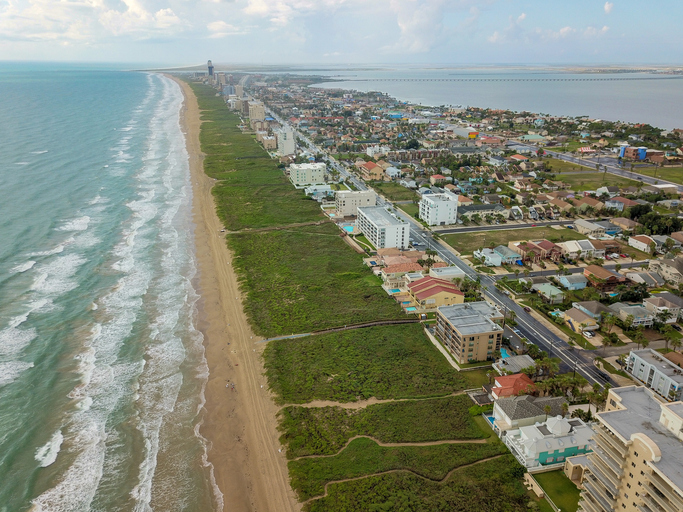
South Padre Island, Texas
Offering elaborate beach parties, beachfront bars, volleyball tournaments, and the Beach Bash Music Fest, South Padre Island attracts nearly 120 thousand spring breakers per year. Known for also being a more budget-friendly option for students, the island was rated one of the 10 best beaches in the USA and offers daytime and nighttime party options for a week of consistent activity.
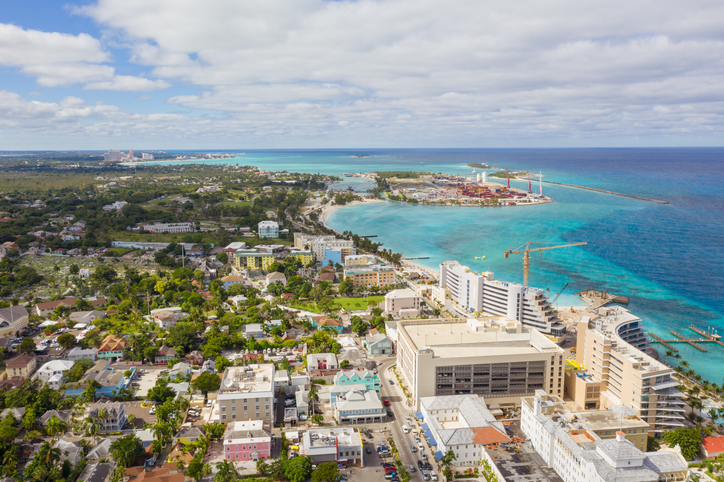
Nassau, Bahamas
Nassau is a more tropical spring break experience that offers a student-exclusive resort with beach and pool parties, lively nightlife, and more. Clubs including Aura, Bond, and John Watling offer open bar options, and popular restaurants including Senor Frogs and Margaritaville make it a unique and popular destination for many students.

Myrtle Beach, South Carolina
Known for its 60-mile stretch of beach, Myrtle Beach is popular for its budget-friendly offerings and attractions including golf, shopping, and a vibrant nightlife. Ranked the #2 beach on the East Coast, there are plenty of dance clubs, bars, and restaurants that become packed during spring break season with no shortage of options.
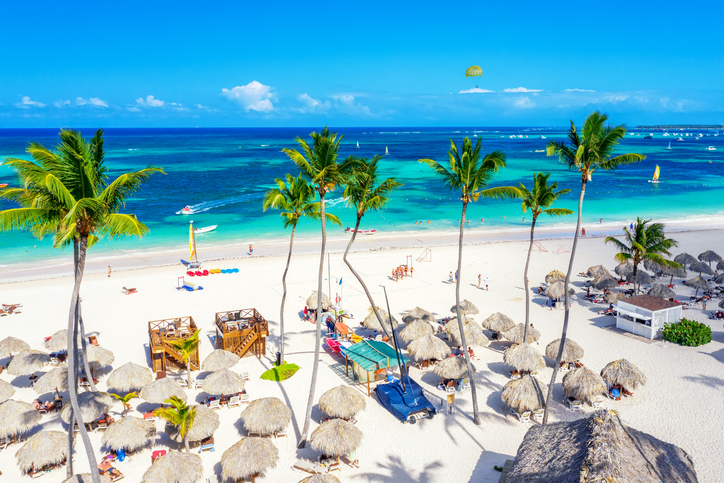
Punta Cana, Dominican Republic
Punta Cana is attractive for its subtropical climates and beaches that offer coral sand as well as its extensive luxury resorts and party culture. Pool and beach parties, dance clubs, casinos, DJs, and more can all be found in Punta Cana on Spring Break.
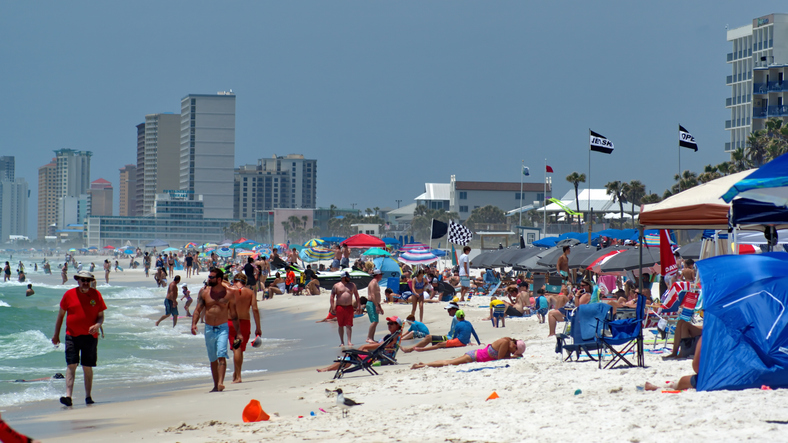
Panama City Beach Florida
Called the “Spring Break Capital of the World,” Panama City Beach, Florida (PCB) is a party hotspot. Over the 27 miles of its white sand beaches, you can find spring breakers sunbathing, attending the Beach Bash Music Fest, or walking to iconic bars such as Whiskey’s Saloon or Tootsie’s Orchid Lounge. Their nightlife stays open almost until morning making it a popular and affordable option for spring breakers.
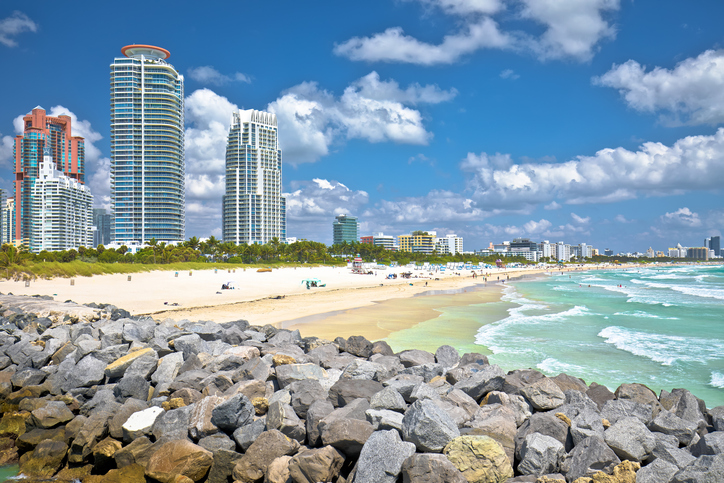
South Beach, Miami, Florida
One of the most classic spring break destinations for students in the U.S., South Beach Miami is said to have a party that never ends. With 10 blocks of beachfront bars, restaurants, hotels, clubs, and more, the huge crowds are always anticipated. A destination so prominent, that in 2023, Miami enforced a curfew for spring breakers to keep them in check.

Las Vegas, Nevada
Vegas is world renowned for its casino and gambling culture and has an established 24-hour nightlife. Its entertainment options, pool parties, dance clubs, casinos, strip clubs, and more depending on the Hotel your student stays at, make it a bucket list destination for many other people than just spring breakers. Be aware that Vegas allows open containers on the strip with bars not having a typical closing time.
Cruises
Beyond the common destinations we mentioned, many spring breakers decide to take their trip at sea. The Carnival Cruise line, Royal Caribbean Cruise, MSC Cruise & Norwegian Cruise are some of the most popular cruises that offer shorter trips for budget-friendly options while not eliminating any of the party aspects. Many of these cruises offer stops in the locations we have already discussed, making them a popular and convenient option to get the most out of a spring break trip. For example, Carnival Cruise offers a three-day cruise that departs from Miami, FL, and heads to Nassau before heading back to Florida on the last day, at only $234 per person.
Onboard, there are plenty of entertainment options and activities such as pools, shows, movies, dance clubs, and more. Typically if the cruise is all-inclusive, these are covered with the cost of all meals and snacks. While alcohol is not normally included in the price, many offer full bars and nightclubs for 21-year-olds, with some even having Casinos. Cruises are increasing in popularity as ideal spring break destination options for seeing multiple places with unlimited party access.
Spring Break Destinations to Avoid
There are of course also some destinations to be concerned about. These locations typically pose more serious safety risks and health threats for your child and should be heavily discussed and possibly re-evaluated if your child has picked one as their spring break destination.

Mexico
While two of the most popular spring break destinations are in Mexico, including Cabo and Cancun, Mexico is generally considered a destination where your safety can be put at risk. A travel warning issued by the U.S. Embassy and Consulates in Mexico was recently released for spring breakers looking at heading to Mexico. They detailed how “violent crime – such as homicide, kidnapping, carjacking, and robbery – is widespread and common in Mexico.” In general, they say to be aware of the following factors when traveling or partying throughout the country:
- Crime
- Drugs
- Unregulated alcohol
- Pharmaceuticals
- Sexual assault
- Drowning
- Medical emergencies
- Guns and ammunition
- Arrests
- Immigration issues
Traveling in Mexico offers inherent dangers not found elsewhere, making this a destination to adequately research into and prepare for significantly before allowing your student to visit.
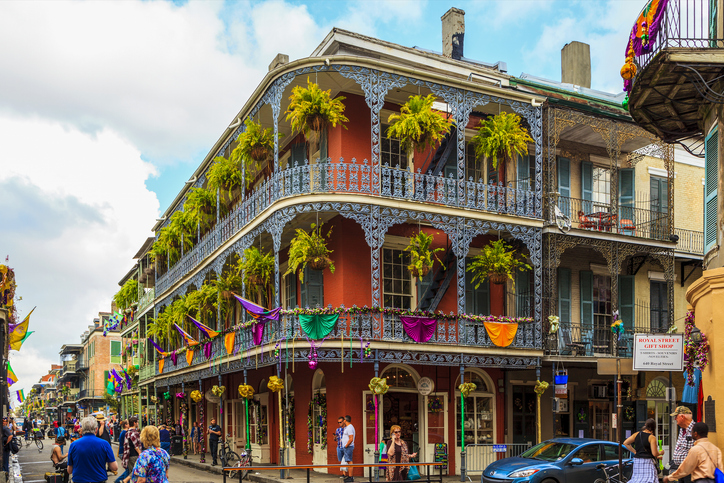
New Orleans, Louisiana
Another notable destination that has become increasingly infamous is New Orleans, Louisiana. While it may offer a vibrant culture, fun nightlife, and prevalent food offerings, New Orleans has consistently been cited for having high levels of STD transmission, alcohol poisoning, and drug overdoses. According to research, New Orleans ranked 2nd for cases of chlamydia and 3rd for cases of gonorrhea following the 2023 spring break. Concerningly, it was also ranked as the number one destination for the prevalence of drug overdoses and reported a significant amount of alcohol poisoning among vacationers during the time frame, making the party culture something to be concerned about.

Biloxi, MS
Biloxi, MS has emerged on this list as being the most dangerous destination to catch an STD. Biloxi is popular for its Annual Mississippi Black Spring Break event which features “26 miles of beach, vendors, food, drinks, shopping, celebrity guests, concerts, and more” along the Mississippi Gulf Coast. This party destination however has led to an average of 22.1 deaths per year due to drug overdoses, 0.7 deaths due to alcohol poisoning, and ranked number 3 on one report of the top 10 most dangerous destinations for spring break this coming year.

Lake Havasu, Arizona
From the same data, Lake Havasu was ranked the most dangerous in terms of deaths related to alcohol poisoning. While Lake Havasu is popular for its sandy beaches and beautiful weather during this time of year, it also ranked #9 on the top 10 most dangerous spring break destinations for deaths due to drug overdoses. If your child is looking to engage in drugs and alcohol during their spring break, the temptation and presence of drugs of abuse found in Lake Havasu should be a warning sign.
Spring Break Risks
As a parent, you may be concerned about the health and safety of your child during their spring break vacation. We hope to equip you with the knowledge to be able to understand what topics are most important to talk to your child about before they leave for their trip. We have included simple tips and suggestions for combating these major issues, and aim to help send your child off prepared.
Human Trafficking
In general, human trafficking is a difficult issue to research as the total number of reports and individual cases tend to vary widely by location and legal system. For instance, in the United States alone, some sources estimate that nearly 15,000 to 50,000 women and children are forced into sexual slavery yearly, with other studies from the Department of Health and Human Services estimating the number to be closer to 240,000 and 325,000. Moreover, according to U.N. statistics, human trafficking has been estimated to become a $9.5 billion industry in the U.S and The National Human Trafficking Resource Center reports that out of all the cases in the last 5 years, 41% of all sex trafficking victims were U.S. citizens with 15 percent of those reported victims being male. This exemplifies how human trafficking is a prevalent phenomenon that is hard to track and can be hard to prepare for.
Spring break poses a unique threat to human trafficking threats. Along with the pure increase in density and crowds found in popular spring break destinations, the influence of alcohol and drugs commonly used during these vacations puts students at a significantly increased risk. For instance, a Northwest Florida expert indicated that “human trafficking numbers trend upward during Spring Break. Spring Break is prime time for these traffickers to strike because there’s lots of activity going on, especially in tourist destinations like Northwest Florida. It’s easier for things to slip under the radar”. While specific statistics regarding the increase in victims during these weeks are hard to pinpoint, spring break is thought to be similar to the increase in human trafficking we see during holiday seasons for similar reasons.
Some common destinations to be aware of that have seen prevalent human trafficking and sex tourism occurrences include Thailand, the Dominican Republic, Brazil, Kenya, Mexico, the Philippines, the Netherlands, Las Vegas, and Quebec. One reason that these places see increased cases may be because prostitution is legal in some of these locations whereas others have less stringent law systems or established protective measures.
For more detailed information, parents and students should look into the information from the United Nations Office on Drugs and Crime (UNODC) and the Office on Women’s Health. For the most recent statistics or analyses by country or region, check the latest UNODC Global Report on Trafficking in Persons and the U.S. Department of State’s Trafficking in Persons Report. These documents provide in-depth insights into the scale, nature, and trends of human trafficking worldwide, offering the most reliable data currently available.
The best way to prepare your child against the risks of human trafficking is to educate them on common methods by which individuals are trafficked, such as false promises of travel opportunities, fake friendships, abduction, coercion, or manipulation by someone they trust. Make them aware of too-good-to-be-true offerings, and equip them with the confidence to say no and escape if needed. This is where a self-defense class or having protection such as pepper spray could come in handy. To seek help, you or your child can reach out to the National Human Trafficking Hotline in the United States by calling 1-888-373-7888 or texting 233733.
Roofies
“Roofies” or Rohypnol, is a powerful sedative that can incapacitate whoever receives it. It is most commonly associated with sexual assault and is odorless, tasteless, and colorless, making it nearly impossible to detect when added to a drink. Drinks are most often roofied in settings like nightclubs, bars, and parties, especially within spring break destinations.
Whether you are a parent reading this article, or a student yourself, never leave drinks unattended, only accept beverages from a friend or directly from the bartender’s hand, and watch your drink be prepared. Keep your hand over the top of your cup or cover it with a napkin to avoid pills being dropped in passing. There are also products, such as wearable nail polish or paper strip detectors, that you can dip in your drink to check if it has been roofied, as it will change colors if it detects drugs.
If roofied, you may experience confusion, decreased inhibition, memory loss, and in many cases a complete blackout, meaning that if you sense any of these you should find help immediately. Parents should advise their children to always stay in groups and choose reputable venues to party in to avoid this threat the best they can. Being cautious of friendly strangers on spring break can be difficult for those looking to party and make new friends, but make them as aware as you can.
Alcohol Poisoning
Alcohol will be consumed during spring break, there is no avoiding that. What’s important to get across to your student as a parent is how to do so in moderation if possible. When it comes to drinking habits over spring break, research has found that college students will consistently underestimate how much they will drink while on their trip, particularly males. Specifically, this study found that those who made drinking pacts or were around friends who drank heavily led them to consume higher levels of alcohol than they originally anticipated, and in many cases led to increased rates of alcohol poisoning.
Spring break boasts a binge drinking culture with more than 50% of college students engaging in binge drinking during their trip. The American College of Health determined that the “average male reported drinking 18 drinks per day and the average female reported up to 10 drinks per day during spring break, well above the safe levels of alcohol consumption”. Another study that looked at drinking habits found that 70% of students will report drinking over spring break, with 23.6% drinking on at least five days and 4.4% drinking on all ten days of their spring break. Finally, 36% of them reported experiencing a negative consequence from their spring break drinking habits.
To educate your college student, teach them about alcohol poisoning, and how to establish responsible drinking habits. Symptoms of alcohol poisoning include confusion, vomiting, seizures, slow or irregular breathing, blue-tinged or pale skin, hypothermia, and unconsciousness. If they or a friend have symptoms, instruct them to immediately call emergency services. If the person is unconscious and if they’re lying down, tell them to turn their head to the side to prevent them choking on saliva or vomit, and try to keep them awake beforehand if possible. Also instruct them to refrain from walking or giving them food, water, or coffee, as this can make things worse for everyone involved. Talk to your student about their limits, and how to enforce the one drink per hour guideline. Instruct them to tally the number of drinks they have on their hand or phone to keep track, and if they have never had a drink, perhaps sit down with them if they are of legal drinking age and have a drink so they know what to expect.
Drug Overdose
During the spring break of 2022, there was a major and widespread report about five cadets from the U.S. Military Academy West Point who all overdosed on fentanyl while on spring break in Fort Lauderdale, FL. Four of the five cadets required emergency hospitalization from the overdose which was suspected to result from a fentanyl-laced powder substance. This event triggered outrage across the country calling for better regulations for irresponsible drug use. Before this event, the CDC reported that deaths from drug overdose had reached an all-time high with over 106,000 Americans dying over 12 months.
During spring break, drug overdosing becomes a significant issue, with certain research indicating that approximately 21% of college students use illicit drugs during their spring break trip. Further research looking into drug-related deaths in this age group found that among individuals aged 15-34, the number of deaths from drug overdoses increased by 36.5% from 2019 to 2020, with the mortality rate increasing by 62% for males, 53% for females, specifically between February 2020 to May 2020, which is when spring break occurs, highlighting how drugs are becoming an increasing concern.
21%
21% of college students use illicit drugs during their spring break trip
Similar to alcohol poisoning, you can protect your student on their spring break trip by teaching them about the symptoms of a drug overdose. While they can vary, they typically involve drowsiness, loss of consciousness, nausea, agitation, abnormal breathing, seizures, chest pain, and changes in body temperature. Being able to identify these symptoms and immediately call emergency services with information about the drug taken, quantities ingested, and the timing if possible is imperative to saving someone’s life. Tell them to stay with the person, keep them awake, and again put them on their side to prevent choking if they’re unconscious or vomiting. For medical treatment, professionals may administer activated charcoal to absorb the drug if ingested orally, or antidotes like naloxone exist for opioid overdoses. Whether due to the party atmosphere, peer pressure, or freedom to try new things during this time, spring break has been known to lead to an increase in risky behaviors, and life-threatening ones to make your child aware of.
Safe Sex and STDs
The information your child received about safe sex in their 5th-grade health class may go straight out the window over spring break. One study conducted at the University of Washington looked at the prevalence of risky sexual behaviors including casual sex, using alcohol before sex, and having multiple partners in populations of spring breakers. It was found that among the students who had sex during their spring break trips, 16% reported doing so with at least one casual partner, and 52% reported not using a condom. This study also found that those willing to engage in one risky behavior will be more likely to engage in others, including unsafe sex, alcohol use, or drug use.
In general, federal data states that STIs will continue to increase. In 2021, the CDC reported a 5.8% increase in cases of chlamydia, gonorrhea, and syphilis from 2020 to 2021, from 2.39 million to 2.53 million cases reported. In college students specifically, the statistics are more concerning, with a 30% increase in reported cases of Gonorrhea in people aged 15-24 from 2010 to 2020. The increasing prevalence of STDs and transmission rates are a notable concern, and for those willing to engage in risky behaviors over their spring break trips, it’s important to be aware of your risk.
As a parent, to decrease the chance of your student contracting an STD, you should rediscuss practices for having safe and consensual sex. You can remind them how to properly and consistently use condoms, what constitutes consensual sex, how to ask their sexual partner if they have or have had an STD, and more. Make them aware that limiting their number of sexual partners will decrease their risk of contracting an STD, and you can recommend that they get an STD screening before and after their vacation. Having open communication with your child can make them better equipped to handle themselves on vacation.
Pickpocketing
Pickpocketing can happen anywhere at any time. During spring break when those destinations become increasingly crowded with students or other tourists, pickpocketing is more likely to occur. Pickpockets can take advantage of the busy environment, and often intoxicated students who are less aware of themselves and belongings. They might work in teams, with one person causing a distraction while another steals from the unsuspecting victim. Common tactics include bumping into someone, asking for directions, or creating a commotion. They might also target individuals in crowded bars or clubs, where attention is diverted. To avoid this, you can look into money belts or bags with RFID protection or locks for your child. Advise them to minimize the valuables they carry on them throughout the day to minimize this threat as well.
When I was on my spring break trip years ago, my friend was a victim of pickpocketing. While alcohol might have been one of the reasons she fell victim, she also put her trust in a stranger when she shouldn’t have. While I wasn’t there, I heard the story the next day. We were in Puerto Vallarta, Mexico, and she and a group of others decided to go out one night. There was a man on the street who caught her attention and was promoting a bar. Enticed, they went inside and before she could even order a drink, her phone was gone. She had been drinking and trusted that this person was helping them find a good party spot. Hence, being aware of these scams is so important, and can happen to anyone in the blink of an eye.
Piercings and Tattoos
My mom has consistently told me that if I get a tattoo, I am written out of her will. My mom is 62, and yes, this is a rather aggressive threat for something seemingly innocent. She made sure to remind me of this threat before I departed for my spring break trip. And while she didn’t have to worry about me, a few others in my group could have used this warning. I was in the second half of my trip to Sayulita, Mexico. We had been drinking one night at the bars, and the next morning I saw one of the members of my group who woke up with two tattoos from the previous night. While he said he didn’t regret them, tattoos and piercings are a common phenomenon for spring breakers looking to take advantage of their freedom and make an unforgettable memory, literally.
It was found that nearly 30% of students who go on a spring break trip end up getting a tattoo or body piercing during their vacation. Moreover, in the U.S. in general, a recent study of American college students found that 60 percent of women and 42 percent of men had piercings of some sort, ranging from their ears, nose, tongue, eyebrow, lip, nipple, and more. Tattooing too has grown in acceptance and prevalence with almost 10 percent of Americans reporting having a tattoo over the last decade. As these trends continue to increase, it’s not surprising to see them increase during spring break too.
If you are concerned about this phenomenon as a parent, the best thing you can do is research how to keep tattoos and piercings clean and safe from infections. Talk about if it’s something they really want, and how to say no to peer pressure if put in that situation. Also inform them of the dangers of getting piercings and tattoos under the influence of alcohol or drugs, which can lead to excessive bleeding and decrease clotting abilities.
Other Tips and Concerns
Among other common concerns for parents about their students on spring break can range from money concerns to threats of illnesses and injuries, to the lack of common sense when it comes to scams.
Money Concerns
First off, students may not want to miss out on a trip or experience and spend more money than they have or want to. The average college student is estimated to spend $1,080 on their trips, with 1 in 5 of them reporting buyer’s remorse after spending large amounts during their spring break. When it comes to mitigating this spending, you can advise your student to plan ahead and book their trip early to decrease travel costs, travel with a group to decrease and split costs, choose less frequented spring break destinations where hotel options might not be as pricy, look for student discounts, or use travel rewards if they have a credit card or other resource.
Illnesses and Injuries
In many third-world countries, health and safety standards may differ and present certain health concerns. For instance, in Mexico, concerns with water-related illnesses are very common and prevalent. Before my own trip there, I had to research and be aware of what foods and water sources might make me sick. This led to me only drinking bottled water, avoiding fruits and vegetables washed in native water, and keeping my mouth closed in the shower. I purchased and brought water cleaning tablets, anti-diarrhea medicine, and more just in case of getting sick.
Moreover, when it comes to injuries, spring-breakers under the influence of drugs and alcohol are more prone to injuries from minor slips and trips to more major falls or fights. Whether alcohol-related accidents, violent crime injuries, motor vehicle accidents, bar and nightclub injuries, or house party incidents, their injuries can result from excessive drinking, criminal activities targeting tourists, or unsafe driving practices. While some are accidents, many are avoidable, making discussions about how to protect their physical health during spring break an important conversation for parents.
Common Scams
When exploring a new city on spring break, you need to make your student aware of scams when it comes to booking excursions, drug mule scams, fake police, and rigged ATMs. First off, when booking activities be sure to use reputable sources like Tripadvisor, GetYourGuide, Viator, or known travel companies for booking tours and excursions. Ensure the transportation matches the company’s branding and the guide can verify your booking. Furthermore, make them cautious of becoming an unintentional drug mule and tell them to never accept items to transport from strangers, as they may contain drugs or other illegal substances. Also, tourist scams such as fake police commonly occur, be sure to always have your student verify the identity of the “cop”, insist on going to the station for any issues, and never pay a supposed fine upfront. Lastly, be wary of rigged ATMs, prefer using those at banks, and consider transactions in local currency to avoid excessive fees. Teaching them how to keep a watchful eye and be aware of their friends’ activities as well is monumental in avoiding scams.
Safety Advice: Spring Break Tips For Your College Student
Buddy system
Without a doubt, there is strength in numbers. When on your spring break vacation, make sure your child establishes a buddy system with their group. They should always leave their hotel, party, or any other situation with at least one friend. Have them establish a time and place to meet each night if things go wrong or people get lost. If they do choose to separate themselves from their group, instruct them to give their friends detailed instructions about where they are going and how long they’ll be gone. You can also have your child share their location with their friends using the Find My application to ensure that someone knows where they are at all times. Make sure they all also have each other’s phone numbers or any other contact information, and have them try to memorize at least one.
Carry Cash
Having some amount of cash in the local currency is a smart move, whether you order it through your bank beforehand, or have your student use an ATM once there. Instruct them to only carry small amounts on their body and leave the rest in a safe location in their room.
Say your student runs out of money when abroad, or gets pickpocketed and loses everything…then what? There are various sources and banking systems you can utilize to help them out and prevent them from getting stranded. If they have access to their bank account login and usable WiFi, Venmo and Zelle are great options for quick and direct transactions. Zelle is directly integrated with many banks, offering fast transfers, whereas Venmo is linked to your bank account. If they don’t have access to these resources, that’s where Western Union comes in handy.

Western Union is a financial services company that provides international money transfer and payment services. Their outlets can be found globally, including in Mexico, at various locations such as banks, post offices, and stores. To use Western Union, you can either visit a physical location or use their online platform. Provide the necessary details for your child, the amount to send, and pay the transaction fee. Your student can then collect the money from their nearest Western Union branch by presenting a valid ID and the transaction reference number. For specific locations and more detailed instructions, be sure to consult Western Union’s official website. Wise too can be used for international transfers and is known for its transparent fees and favorable exchange rates for bank transfers.
Don’t Accept “Candy” from Strangers
Make your child weary of strangers and as always, tell them to decline anything they try to give them. While it’s different from the candy in the white van scenario, again, they could become an inadvertent drug mule and could get in trouble for transferring materials they may not know about. Tell them to never ever accept drugs or alcohol from someone they don’t know or an unreliable source. For one, they could be laced and lead to overdoses or contain roofies that can put you in an unfavorable situation. The best practice is to purchase closed containers or if you decide to partake, any drugs from an established and legal company. Also, be aware of laws surrounding drinking publicly or consuming any other substances to avoid persecution.
Female-Specific Considerations
If you have a daughter, she may require unique considerations when it comes to traveling and maintaining her safety during spring break. Unfortunately, it was found that about 17% of female college students reported engaging in unwanted sexual activity during spring break. Sexual assault is an issue, and it is essential to educate her about this issue before leaving for the trip.
In creating a safe atmosphere as a female during your trip, there are a few things you can do. First, taking a self-defense class is highly recommended to protect yourself in case anything happens. From basic self-defense moves, to kickboxing, Jiu-Jitsu, and other classes, learning how to apply defensive moves in a variety of settings and situations can be extremely useful. You would hopefully only resort to these physical measures as your last option. Secondly, purchasing and carrying pepper spray or other alarm systems, such as the Birdie Personal Safety Alarm, can be a great tool to scare off attackers. Be sure to know how to use these tools in an emergency.
Lastly, when it comes to having safe and consensual sex, know how to say no. Make your boundaries understood, and know that you can always remove yourself from a sexual situation at any point. You have the power over your own body, and knowing what you want from your spring break trip can help you tailor your defense tactics.
Beach Safety
Using common sense when traveling to a location with an ocean or other water sources should be understood. The American Safety Council found that alcohol is involved in 70% of recreational water activity deaths, so teach your student how to avoid drinking and swimming and how to be smart with their alcohol choices in general. When it comes to the ocean, always be aware of rip currents, swim near lifeguards, heed warnings about marine life, and avoid diving into shallow areas. Don’t test your swimming abilities and think you can outpower the currents, if caught in a riptide, stay calm and swim parallel to the shoreline. When it comes to tanning, know that sun poisoning is a harsh reality following a nasty burn. Use sunscreen, stay hydrated, especially if day drinking, and don’t let the sun overwhelm you.
Pack a Safety Kit
It might be helpful to pack a safety kit before they leave. I did this for my trip and found it quite useful as there were tons of little incidents when it came in handy. Common things to pack include the following:
- First aid kit (bandaids, antibiotics, gauze, etc.)
- Emergency food (i.e. power bars or other dry food)
- Anti-diarrhea medicine or tums
- Cash (keep only a small amount on your person)
- Backup chargers
- Hand Sanitizer
- Sunscreen
- Liquid IV or other supplements for hydration
Preparation Before You Go
Before leaving for their spring break trip there are some key preparatory steps:
- Take a self-defense class
- Purchase Anti-Theft Bags for your valuables
- Have backup copies of your documents
- Establish a phone plan
- Plan your destination and accommodations
Start by enrolling them in a self-defense class to equip themselves with protective skills and again have them consider carrying non-lethal defense tools like pepper spray. Investing in anti-theft bags will secure their valuables with features like lockable zippers and RFID blocking can save you lots more money than if they get their wallet stolen in the long run. Ensure they have digital and physical copies of important documents in case they lose them. This could include printed companies of their ID or passports, emailed documents to family members, or backup documents on their laptops, along with copies of important phone numbers and addresses. Establish a reliable phone plan for communication especially if traveling abroad, such as by obtaining a new SIM card or getting WhatsApp, and meticulously plan your destination, including safety research and accommodation arrangements.
Types of Accommodation and Transportation Safety
The type of accommodation your student chooses for their spring break trip will probably depend on the size of your group, their budget, and location within the city. Understanding some of the most common accommodation options and what they each have to offer can help you decide what best fits their needs and safety.
Hostels
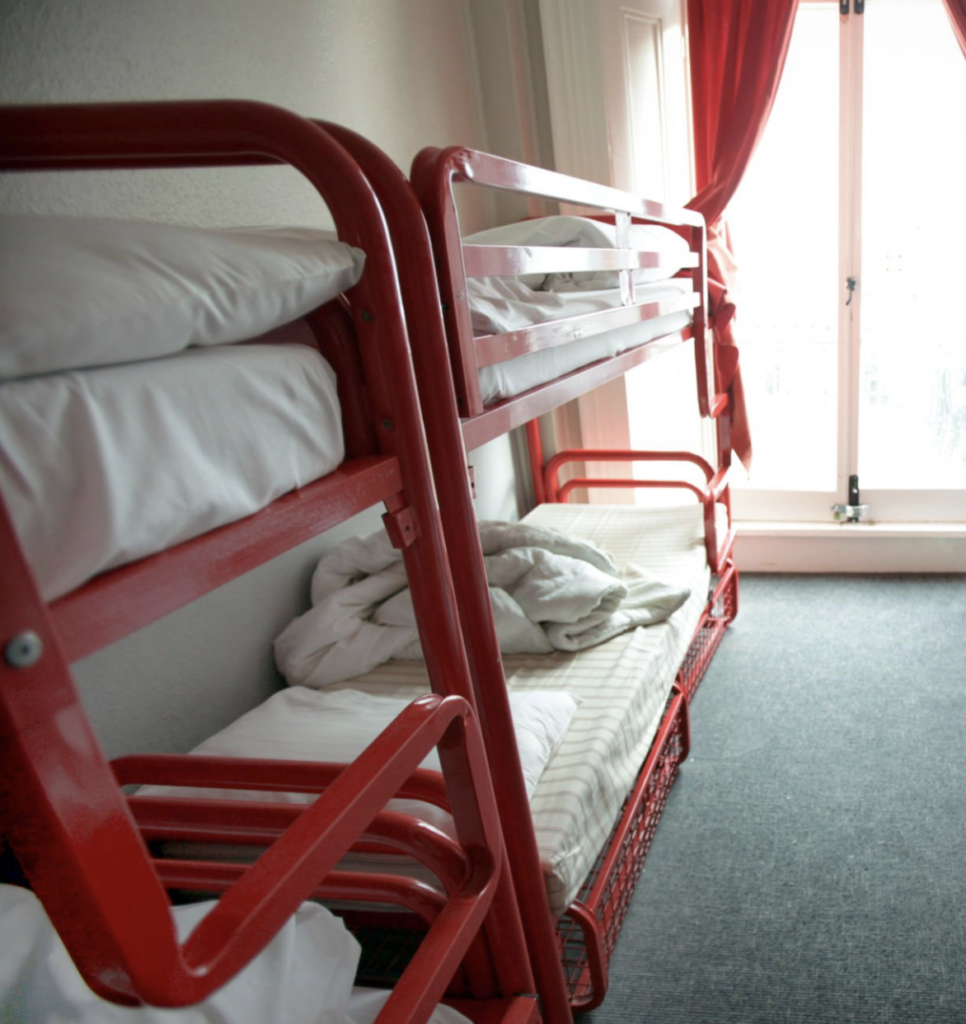
Hostels are popular for their fair pricing, social opportunities, and general availability. Known for offering shared rooms and having common spaces, they are a flexible and affordable option for groups of spring breakers looking to stay together in mixed or gender-specific rooms. They are generally safe and offer 24-hour reception desks, security cameras in common areas, auto-locking from doors, and individual storage spaces within a room. However, if staying with others you don’t know, lock up your stuff and be aware of your personal safety. You can read reviews and find the best options using the Hostelworld app.
Resorts
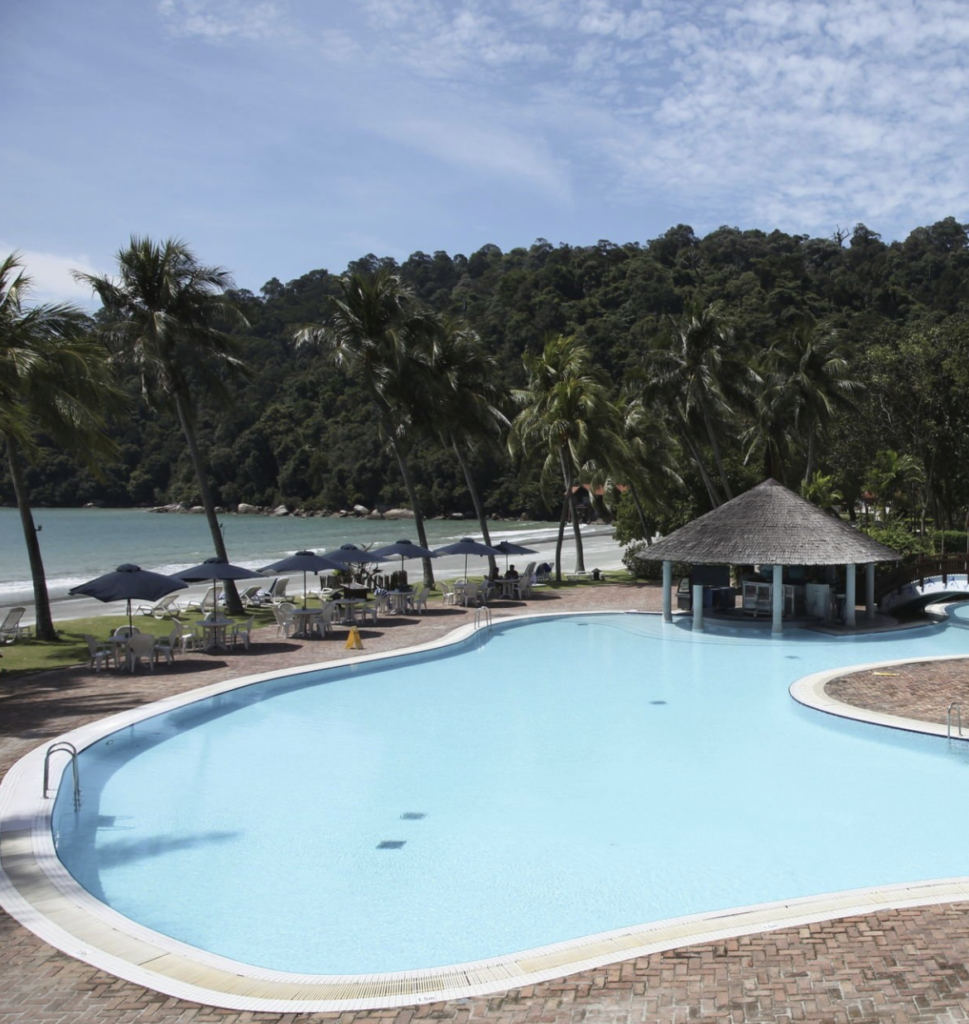
Staying at a resort over spring break is most common in destinations outside of the United States and is highly recommended in places like Mexico, the Dominican Republic, and the Bahamas. Not only do these resorts typically offer an all-inclusive package, including accommodations, meals, drinks, and sometimes even activities and entertainment, but they are also one of the safest places you can stay in Cancun or Cabo for instance when general safety in the city is questionable. All-inclusive packages can vary, so check what is included and any potential extra costs to budget it correctly.
Airbnb or VRBO

Airbnb and VRBO are also great options for spring breakers traveling in groups. Typically easy to use, these are platforms that allow independent property owners or individuals to rent out their spaces to travelers. VRBO typically offers whole-property rentals better for larger parties, whereas Airbnb offers single rooms, apartments, condos, and more. When using these platforms, always check the ratings, read the reviews from other travelers, and contact the host with any questions before booking. Looking for safety reports in these reviews is also helpful if you are unfamiliar with the area.
Hotels

Hotels are known to experience a 25% to 40% increase in bookings during spring break across all of the popular locations. Booking ahead of time if you are staying in a hotel is the best way to get the lowest rates and guarantee there’s enough space for your group. Generally safe options in terms of security and health standards, hotels are often flexible and offer minimal surprises.
Overview of Transportation Options
In getting to or around your destination, there are various options to be aware of. Public transport is generally safe to use in most larger cities and ranges from buses to metro systems, trains, and more. Uber and taxi services are typically reliable, but availability varies by city and be sure to research the laws and safety surrounding the service. Walking is one of the most common and easiest forms of transportation during spring break. Be sure to always get a ride if you have been drinking, and never get into the car of someone else who is under the influence. Drinking and driving not only puts you and the passengers at risk but also bystanders and others walking in the area. Using scooters and bikes for short distances is also a great option if you use them safely and are coherent.
Final Thought
When it comes to spring break, it is important to know the most common destinations and what to look out for in terms of safety. College students are known to party, and during spring break, we see elevated levels of drinking, drug use, sexual activity, and health concerns, making spring break a common worry for parents all around the United States. When it comes to protecting your child and maximizing their safety during their trip, sit them down and go through a checklist. Inform them of how to drink responsibly, have safe sex, how to identify scams and human trafficking threats, what situations to avoid, and how to ask for help. Send them prepared with backup documents, cash, pepper spray, a safety kit, and condoms to put both of you at peace of mind. Spring break can be an unforgettable experience, depending on how much alcohol you drink, and moderation is key to having fun.
Disclaimer
Content on this site is for reference and information purposes only. Do not rely solely on this content, as it is not a substitute for advice from a licensed healthcare professional. StaySafe.com assumes no liability for inaccuracies. Consult with your doctor before beginning any medications or programs.


